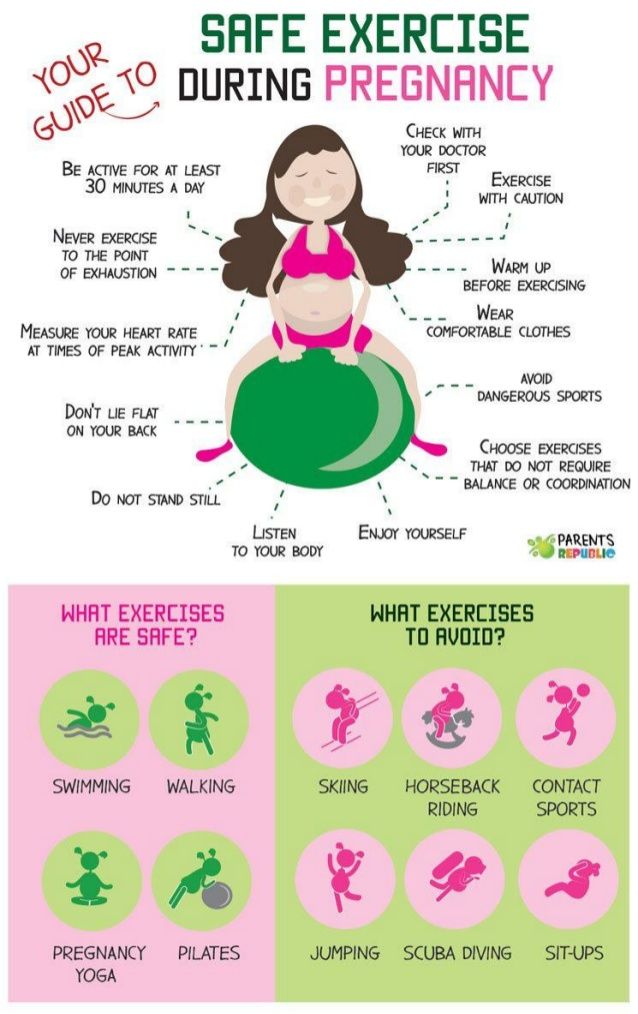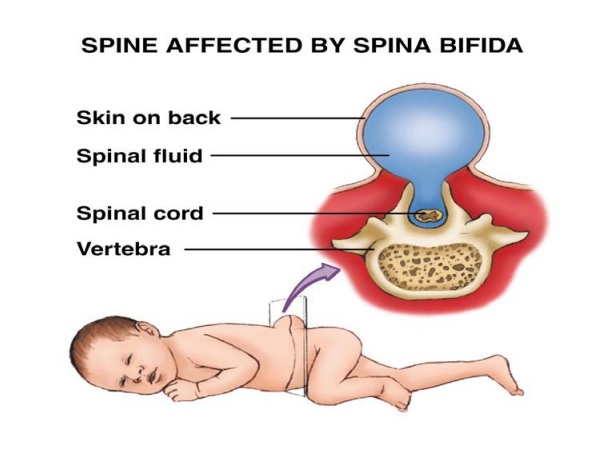Baby birth normal
What To Expect, Benefits & Complications
What is a vaginal delivery?
A vaginal delivery is when a person gives birth through their vagina. It's the most common method of childbirth. During a vaginal birth, your uterus contracts to thin and open your cervix and push your baby out through your vagina (or birth canal).
Healthcare providers prefer vaginal deliveries because they're usually safest for the fetus and the birthing person. A vaginal delivery occurs most often between weeks 37 and 42 of pregnancy.
How common are vaginal deliveries?
According to the Centers for Disease Control and Prevention (CDC), there were more than 2.5 million vaginal deliveries in 2020. Vaginal deliveries account for about 68% of all births in the United States and 80% of births worldwide.
What are the types of vaginal delivery?
There are different types of vaginal deliveries: spontaneous, induced and assisted.
- Spontaneous vaginal delivery: A vaginal delivery that happens on its own and without labor-inducing drugs.
- Induced vaginal delivery: Drugs or other techniques initiate labor and prepare your cervix. This is also called labor induction.
- Assisted vaginal delivery: A vaginal birth that occurs with the help of forceps or a vacuum device to get your baby out. Both spontaneous and induced vaginal delivery can be assisted.
What are the stages of a vaginal delivery?
A vaginal delivery can be broken into three stages: labor, birth and delivering the placenta.
Labor
The first stage of labor begins with uterine contractions and ends with your cervix being 10 centimeters dilated and 100% effaced.
Labor can be classified as early labor, active labor and transitional labor.
- Early labor: The time when contractions begin and your cervix starts to open (dilate) and thin (efface). Your cervix may be about 5 centimeters dilated at the end of early labor.
- Active labor: This stage of labor consists of strong contractions that last up to one minute each and happen about three minutes apart.
 Some people request an epidural during this time because contractions can be painful. Healthcare providers may also give you oxytocin (Pitocin®) to speed up labor.
Some people request an epidural during this time because contractions can be painful. Healthcare providers may also give you oxytocin (Pitocin®) to speed up labor. - Transitional labor: This is the time just before your cervix is 10 centimeters dilated. It's a short but intense time when your contractions come very quickly and last longer than one minute. This phase may make you sweat, vomit or feel shaky. It happens just before you begin to push.
Birth
The birthing stage begins when you reach 10 centimeters and ends with the birth of your baby through your vagina. In this stage of labor, you experience strong contractions and begin pushing. You may feel pressure or like you need to poop. Your healthcare provider may coach you through pushing, especially if you've had an epidural and can't feel contractions. This phase can last a few minutes or a few hours. Generally, birth is quicker if you've had a prior vaginal delivery.
Delivering the placenta
The last stage of labor is delivering the placenta (commonly called afterbirth). It begins after your baby is removed from your vagina and ends when your placenta is delivered. Your healthcare provider may ask you for a few more pushes. This stage begins a few minutes after your baby is born and lasts up to 30 minutes.
It begins after your baby is removed from your vagina and ends when your placenta is delivered. Your healthcare provider may ask you for a few more pushes. This stage begins a few minutes after your baby is born and lasts up to 30 minutes.
It's important to remember that labor and childbirth are different for everyone. Certain factors can play a role in your labor being longer or shorter. For example, if you get an epidural, you won't experience the same pain level as a person who doesn't get an epidural. Also, your labor may be longer if it's your first baby. Factors like the size and position of your baby and how quickly you dilate can all affect how long a vaginal delivery takes.
What are the risks of having a vaginal delivery?
Vaginal deliveries generally carry the least risk. The most common complications during a vaginal delivery are:
- Failure to progress: This is when labor slows or stops and your cervix doesn't dilate. Your healthcare provider may give you oxytocin to stimulate contractions and progress labor.

- Irregular fetal heart rate: This is when your baby's heart rate slows down because their head or umbilical cord is compressed.
- Hemorrhage: This is excessive or life-threatening bleeding during or after birth. Sometimes a person doesn't bleed until several hours after delivery (postpartum hemorrhage).
- Vaginal tears: These are tears in the tissue around your vagina and rectum that happen during childbirth.
- Deep vein thrombosis: These are blood clots that develop in your legs or pelvis shortly after delivery.
- Postpartum preeclampsia: This is excessively high blood pressure in a person who has just given birth.
Reasons to avoid vaginal delivery
A vaginal delivery is usually the preferred delivery method. However, certain conditions make a vaginal delivery dangerous. Your healthcare provider may recommend a C-section delivery if:
- Your baby is in a breech position.

- You have placenta previa or a problem with your placenta.
- You have an untreated infection or open genital lesions from herpes simplex virus.
- You have a chronic health condition.
What are the advantages of a vaginal delivery?
A vaginal delivery offers several benefits to both the birthing person and the fetus.
The benefits of vaginal delivery for the birthing person are:
- Shorter recovery time.
- Lactation begins sooner.
- Lower chance of future pregnancy complications.
The benefits of vaginal delivery for the fetus are:
- Lower chance of respiratory conditions.
- Improved immune system function.
- More likely to breastfeed (chest feed).
Is a vaginal delivery painful?
Yes, it can be painful. There are many options to help manage your pain during a vaginal delivery. Some people choose to get an epidural block. An epidural numbs your body from the waist down. Discuss your options for pain relief with your healthcare provider.
Discuss your options for pain relief with your healthcare provider.
What side effects can I expect after a vaginal delivery?
You may have physical and emotional changes after giving birth. It's common to experience:
- Constipation.
- Engorged breasts.
- Pain and soreness in your vagina, especially if you tore.
- Mood swings.
- Vaginal bleeding.
- Hemorrhoids.
- Headaches, hot flashes or sweating (from hormonal changes).
- Cramps.
- Lochia (a type of vaginal discharge).
Some people experience the "baby blues," postpartum depression or postpartum anxiety. Hormonal changes may cause sadness, crying or other emotions within the first few weeks after a vaginal delivery. If you still feel sad, anxious or have mood swings several weeks or months after your baby is born, talk to your healthcare provider.
How long does it take to heal from vaginal delivery?
Recovery time for a vaginal delivery varies. Generally, healing from a vaginal delivery is faster than it is for a C-section. Several factors can influence how quickly you heal. One of those is if your vagina tears and how severe that tear is. If you've torn, you may feel sore for several weeks. Going to the bathroom, sitting and standing or performing everyday tasks may be painful. It's normal to experience swelling and itching around the tear. Most people will have swelling, bruising and general soreness in their vaginal area for a week or two, regardless of vaginal tearing. Putting cold compresses or cooling sanitary pads on your vaginal area may help.
Generally, healing from a vaginal delivery is faster than it is for a C-section. Several factors can influence how quickly you heal. One of those is if your vagina tears and how severe that tear is. If you've torn, you may feel sore for several weeks. Going to the bathroom, sitting and standing or performing everyday tasks may be painful. It's normal to experience swelling and itching around the tear. Most people will have swelling, bruising and general soreness in their vaginal area for a week or two, regardless of vaginal tearing. Putting cold compresses or cooling sanitary pads on your vaginal area may help.
How long do you bleed after a vaginal delivery?
It depends on the person. Some people will bleed for less time than others. It's normal to be bleeding at your postpartum visit several weeks later. Contact your healthcare provider if your bleeding increases over time or you're still filling extra thick sanitary pads after several weeks.
How long after vaginal delivery can you have sex?
Most healthcare providers recommend waiting at least six weeks or until after your postpartum visit to have sex. This gives your body time to heal and allows your provider to examine your vagina to make sure it has healed. Also, consider birth control options and future pregnancies before engaging in sexual intercourse again. Just because you aren’t menstruating and have just given birth doesn't mean you can't get pregnant again.
This gives your body time to heal and allows your provider to examine your vagina to make sure it has healed. Also, consider birth control options and future pregnancies before engaging in sexual intercourse again. Just because you aren’t menstruating and have just given birth doesn't mean you can't get pregnant again.
Can you prepare for a vaginal delivery?
You can try to prepare by creating a birth plan, but there's no way to know what will happen when the time comes. Every labor and delivery is unique. It may help to discuss your wishes with your partner, family, friends and healthcare provider. Asking questions beforehand can also help you know what to expect.
What questions should I ask my healthcare provider about a vaginal delivery?
It's hard to know what to expect from a vaginal delivery, especially if you've never given birth. Even if you've had previous vaginal deliveries, each delivery is unique and different.
Some common questions that people ask their healthcare provider about a vaginal delivery are:
- What are the risks of a vaginal delivery?
- How will I know when to push?
- How can I reduce my risk of vaginal tearing?
- How will I know labor is starting?
- When should I go to the hospital?
- How long will it take to recover from vaginal delivery?
- Is there anything I can do to improve my chances of a normal delivery?
A note from Cleveland Clinic
Giving birth is an exciting and life-altering event. Every pregnancy, labor and delivery is unique. A vaginal delivery is the most common way to give birth. It's hard to know what to expect until you've experienced it, but talking to your healthcare provider and asking questions can help you prepare. Vaginal deliveries are generally low-risk and highly successful. Your healthcare team is trained to manage any complications that arise and help you welcome a healthy baby into the world.
Every pregnancy, labor and delivery is unique. A vaginal delivery is the most common way to give birth. It's hard to know what to expect until you've experienced it, but talking to your healthcare provider and asking questions can help you prepare. Vaginal deliveries are generally low-risk and highly successful. Your healthcare team is trained to manage any complications that arise and help you welcome a healthy baby into the world.
Your baby in the birth canal Information | Mount Sinai
Shoulder presentation; Malpresentations; Breech birth; Cephalic presentation; Fetal lie; Fetal attitude; Fetal descent; Fetal station; Cardinal movements; Labor-birth canal; Delivery-birth canal
During labor and delivery, your baby must pass through your pelvic bones to reach the vaginal opening. The goal is to find the easiest way out. Certain body positions give the baby a smaller shape, which makes it easier for your baby to get through this tight passage.
The best position for the baby to pass through the pelvis is with the head down and the body facing toward the mother's back. This position is called occiput anterior.
Childbirth is really a series of four stages that culminate in the actual birth and short period thereafter. For more specific information regarding emergency delivery see the information on childbirth, emergency delivery.
Emergency measures are indicated when childbirth is imminent and no health care professional is present. Indications of late labor include rupturing of the amniotic sac, dilation of the cervix, and appearance of the baby's head at the vaginal opening.
Emergency measures are indicated when childbirth is imminent and no health care professional is present. Indications of late labor include rupturing of the amniotic sac, dilation of the cervix, and appearance of the baby's head at the vaginal opening.
Cephalic (head first) presentation is considered normal, but a breech (feet or buttocks first) delivery can be very difficult, even dangerous for the mother and the baby.
In a normal pregnancy, the baby is positioned head down in the uterus.
The term fetal presentation refers to the part of your baby's body that is closest to the birth canal. In most full-term pregnancies, the baby is positioned head down, or cephalic, in the uterus.
Information
Certain terms are used to describe your baby's position and movement through the birth canal.
FETAL STATION
Fetal station refers to where the presenting part is in your pelvis.
- The presenting part. The presenting part is the part of the baby that leads the way through the birth canal. Most often, it is the baby's head, but it can be a shoulder, the buttocks, or the feet.
- Ischial spines. These are bone points on the mother's pelvis. Normally the ischial spines are the narrowest part of the pelvis.
- 0 station. This is when the baby's head is even with the ischial spines. The baby is said to be "engaged" when the largest part of the head has entered the pelvis.
- If the presenting part lies above the ischial spines, the station is reported as a negative number from -1 to -5.
In first-time moms, the baby's head may engage by 36 weeks into the pregnancy. However, engagement may happen later in the pregnancy, or even during labor.
FETAL LIE
This refers to how the baby's spine lines up with the mother's spine. Your baby's spine is between his head and tailbone.
Your baby's spine is between his head and tailbone.
Your baby will most often settle into a position in the pelvis before labor begins.
- If your baby's spine runs in the same direction (parallel) as your spine, the baby is said to be in a longitudinal lie. Nearly all babies are in a longitudinal lie.
- If the baby is sideways (at a 90-degree angle to your spine), the baby is said to be in a transverse lie.
FETAL ATTITUDE
The fetal attitude describes the position of the parts of your baby's body.
The normal fetal attitude is commonly called the fetal position.
- The head is tucked down to the chest.
- The arms and legs are drawn in towards the center of the chest.
Abnormal fetal attitudes include a head that is tilted back, so the brow or the face presents first. Other body parts may be positioned behind the back. When this happens, the presenting part will be larger as it passes through the pelvis. This makes delivery more difficult.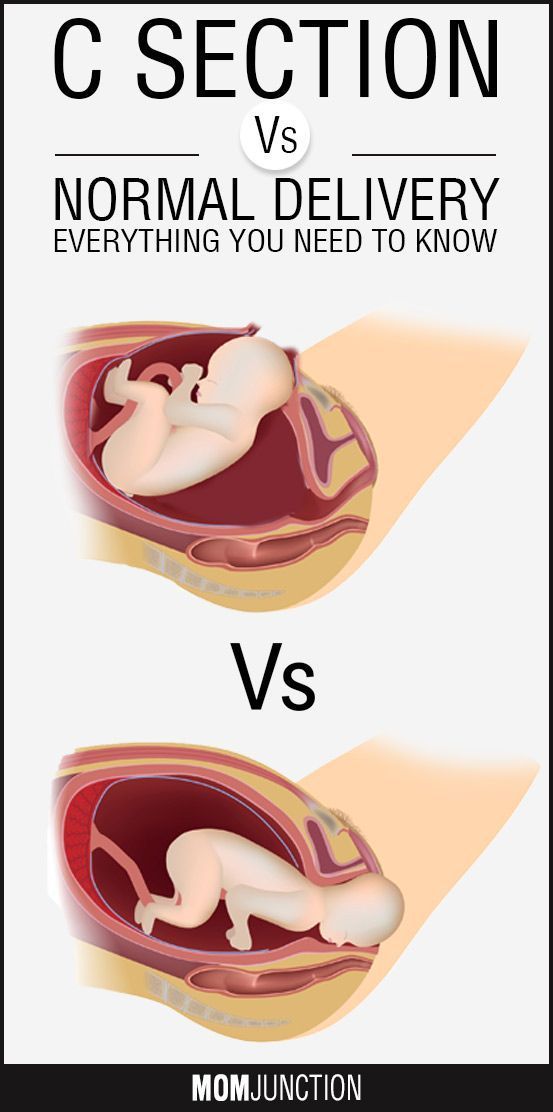
DELIVERY PRESENTATION
Delivery presentation describes the way the baby is positioned to come down the birth canal for delivery.
The best position for your baby inside your uterus at the time of delivery is head down. This is called cephalic presentation.
- This position makes it easier and safer for your baby to pass through the birth canal. Cephalic presentation occurs in about 97% of deliveries.
- There are different types of cephalic presentation, which depend on the position of the baby's limbs and head (fetal attitude).
If your baby is in any position other than head down, your doctor may recommend a cesarean delivery.
Breech presentation is when the baby's bottom is down. Breech presentation occurs about 3% of the time. There are a few types of breech:
- A complete breech is when the buttocks present first and both the hips and knees are flexed.
- A frank breech is when the hips are flexed so the legs are straight and completely drawn up toward the chest.

- Other breech positions occur when either the feet or knees present first.
The shoulder, arm, or trunk may present first if the fetus is in a transverse lie. This type of presentation occurs less than 1% of the time. Transverse lie is more common when you deliver before your due date, or have twins or triplets.
CARDINAL MOVEMENTS OF LABOR
As your baby passes through the birth canal, the baby's head will change positions. These changes are needed for your baby to fit and move through your pelvis. These movements of your baby's head are called cardinal movements of labor.
Engagement
- This is when the widest part of your baby's head has entered the pelvis.
- Engagement tells your health care provider that your pelvis is large enough to allow the baby's head to move down (descend).
Descent
- This is when your baby's head moves down (descends) further through your pelvis.
- Most often, descent occurs during labor, either as the cervix dilates or after you begin pushing.

Flexion
- During descent, the baby's head is flexed down so that the chin touches the chest.
- With the chin tucked, it is easier for the baby's head to pass through the pelvis.
Internal Rotation
- As your baby's head descends further, the head will most often rotate so the back of the head is just below your pubic bone. This helps the head fit the shape of your pelvis.
- Usually, the baby will be face down toward your spine.
- Sometimes, the baby will rotate so it faces up toward the pubic bone.
- As your baby's head rotates, extends, or flexes during labor, the body will stay in position with one shoulder down toward your spine and one shoulder up toward your belly.
Extension
- As your baby reaches the opening of the vagina, usually the back of the head is in contact with your pubic bone.
- At this point, the birth canal curves upward, and the baby's head must extend back.
 It rotates under and around the pubic bone.
It rotates under and around the pubic bone.
External Rotation
- As the baby's head is delivered, it will rotate a quarter turn to be in line with the body.
Expulsion
- After the head is delivered, the top shoulder is delivered under the pubic bone.
- After the shoulder, the rest of the body is usually delivered without a problem.
Barth WH. Malpresentations and malposition. In: Landon MB, Galan HL, Jauniaux ERM, et al, eds. Gabbe's Obstetrics: Normal and Problem Pregnancies. 8th ed. Philadelphia, PA: Elsevier; 2021:chap 17.
Kilpatrick SJ, Garrison E, Fairbrother E. Normal labor and delivery. In: Landon MB, Galan HL, Jauniaux ERM, et al, eds. Gabbe's Obstetrics: Normal and Problem Pregnancies. 8th ed. Philadelphia, PA: Elsevier; 2021:chap 11.
8th ed. Philadelphia, PA: Elsevier; 2021:chap 11.
Last reviewed on: 12/3/2020
Reviewed by: LaQuita Martinez, MD, Department of Obstetrics and Gynecology, Emory Johns Creek Hospital, Alpharetta, GA. Also reviewed by David Zieve, MD, MHA, Medical Director, Brenda Conaway, Editorial Director, and the A.D.A.M. Editorial team.
Normal pregnancy in women can vary within five weeks
Science
close
100%
Scientists questioned the seemingly unshakable fact that a child develops in the womb for nine months. They just accurately calculated the timing and received a lot of interesting information.
The duration of pregnancy in a woman - it would seem, what could be new here? Of course, the well-known nine months is very rounded. Doctors calculate the expected date of birth of a child by counting 280 days from the start of the last menstrual period.
But, according to statistics, only 4% of women give birth after the prescribed 280 days, and 70% fit within plus or minus ten days from the appointed date.
An unexpected conclusion was reached by specialists of the National Institute for Health and the Environment in Durham, USA. They proved that the duration of a normal pregnancy can vary widely - with a range of 37 days, and reported their results in the journal Human Reproduction .
“If you want a boy, douche with soda”
Georgy Mestergazi, chief physician of the hospital for...
July 25, 11:56
The timing of such important processes as ovulation (release of a mature egg from the ovary) and implantation of the embryo into the uterus has so far been estimated very roughly. So, doctors determine the moment of ovulation by raising the morning rectal temperature. But this method carries a large error and, moreover, does not say anything about when the embryo was introduced into the uterine mucosa.
The essence of the approach used in this study is the accuracy of determining the moment of conception.
The team used information from 130 women who had previously participated in the North Carolina Pregnancy Study. During the study, urine samples were collected daily from women, which were examined for hormone levels. Changed hCG (chorionic gonadotropin), estrone-3-glucuronide and pregnanediol-3-glucuronide. The day of ovulation was determined by the fall in the ratio between estrogen and progesterone. And the moment of implantation of the embryo into the uterus was defined as the first day of the rise in the level of hCG.
Specialists analyzed the timing of delivery in 125 women with normal pregnancies. And it turned out that the time from the moment of conception to the moment of the birth of a child varies quite a lot.
"We calculated that the average time from ovulation to delivery is 268 days - 38 weeks and two days," says Anna Maria Jukis, author of the study. “However, even when we excluded six cases of preterm birth, we found that the duration of pregnancy varied within 37 days.”
“However, even when we excluded six cases of preterm birth, we found that the duration of pregnancy varied within 37 days.”
Liver protein will help you get pregnant
The protein that performs the main work in the liver, it turns out, plays a critical role in pregnancy, it was shown ...
01 July 13:45
Until now, it was thought that the variation in the duration of pregnancy was due to errors in determining its onset. Scientists have eliminated errors - and the scatter has even increased. "It's amazing!" Jukis says.
In addition to the variability in the duration of pregnancy, scientists have found that the embryo, which takes longer to implant in the uterus after fertilization of the egg, develops longer. And if at the beginning of pregnancy there was a late rise in progesterone, the pregnancy was shorter than with an early rise, on average by 12 days. Experts were surprised by the fact that the events that occur at the very beginning of pregnancy have an impact on its outcome - on the time of the birth of the child.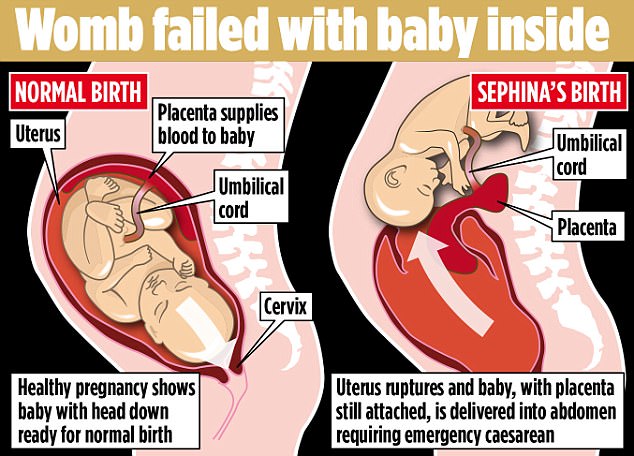 They conclude that by observing the onset of pregnancy, it is possible to some extent predict its end.
They conclude that by observing the onset of pregnancy, it is possible to some extent predict its end.
Jukis and colleagues analyzed a variety of factors that showed a correlation with duration of pregnancy.
Older women had longer pregnancies, with each year of a woman's age adding one day to her pregnancy.
Fertilization for the poor
Belgian researchers have developed a new in vitro fertilization (IVF) technology that is easier...
15 July 09:23
And women who themselves had more weight at birth, bore their child longer. Experts calculated that for every 100 grams of birth weight a mother added one day to her pregnancy. Finally, if a woman's previous pregnancies lasted longer than the average, then the subsequent pregnancy was longer. The latter is regarded by experts as evidence of the influence of a woman's individuality on this indicator.
So, the authors of the study come to the conclusion that the duration of a woman's pregnancy can vary greatly and depends on many factors, even with an accurate determination of the moment of ovulation. They suggest that the "timecode" of pregnancy can be more or less accurately determined based on the hormonal events of the first two weeks after conception and the length of previous pregnancies.
They suggest that the "timecode" of pregnancy can be more or less accurately determined based on the hormonal events of the first two weeks after conception and the length of previous pregnancies.
However, they believe that it is premature to make any clinical recommendations based on the results obtained. This will require additional research. But at the very least, doctors need to be aware that five weeks off the estimated due date is normal.
Subscribe to Gazeta.Ru in News, Zen and Telegram.
To report a bug, select the text and press Ctrl+Enter
News
Zen
Telegram
Picture of the day
"There is no point in teaching them." Why did the USA leave the pilots of the Armed Forces of Ukraine without F-16 fighters
Deputy head of the Pentagon Kahl said that the conflict in Ukraine could last from 6 months to 3 years
“The end of the war does not normalize relations with Russia. There is no turning back”
NATO Secretary General Stoltenberg declared the impossibility of restoring normal relations with Moscow
Leopard 2 tanks are already in the Bakhmut area: how the Armed Forces of Ukraine plan to use them
Western-made main battle tanks entered the armored forces of the Armed Forces of Ukraine
The European Union assessed the possibility of easing sanctions against Russia
Marochko stated that the units of the Armed Forces of Ukraine involve teenagers in the performance of combat missions
RIA Novosti: the Wagner group destroyed the Ukrainian infantry fighting vehicle in the battle for the southern quarters of Artemovsk
DPR: Ukraine pulls Western weapons to Chasov Yar for its further defense
News and materials
Russian goalkeeper set a new NHL record
A criminal case was opened in St. Petersburg after a teenager was beaten during a quest
Petersburg after a teenager was beaten during a quest
Solomatin: Akinfeev again proved that the boy Safonov is up to him to work and work
Disney releases first trailer for Peter Pan and Wendy
In the Tobolsk polyclinic, doctors refused to help a child who lost consciousness
NHK: Japan's Child Suicide Hits Record High in 2022
The third scorer of the 2022/23 season of the Premier League pleaded guilty to sports betting
Seismologist Hugerbits, who predicted the tragedy in Turkey, spoke about the mega-earthquake in March
In the Ivanovo region, the body of a baby was found in a ravine
Lukashenka: Belarus has never set a goal to be friends or work against someone
Lukashenko spoke about his visit to Beijing
Death toll in train collision in Greece rises to 29
Russians were given ways to send money abroad
Serie A top scorer could have lost an eye
The Ministry of Defense of Taiwan announced the approach of 25 aircraft and three ships of the PRC to the island
Forecasters spoke about the weather in Moscow on March 1
Legion Football Club President Lakhiyalov spoke about the referees' demand to pay for victories
Death toll in train collision in Greece rises to 26
All news
Military operation in Ukraine.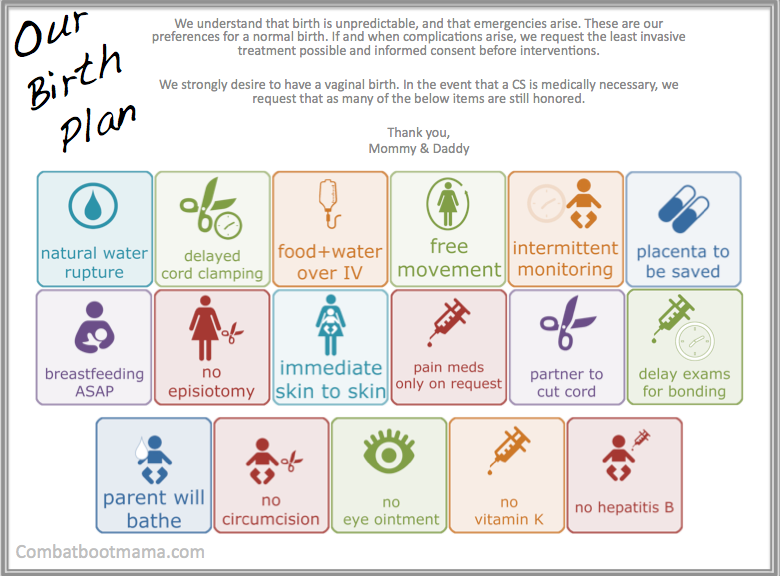 Day 370
Day 370
Online broadcast of the special military operation of the Russian Federation in Ukraine - Day 370
"Unprecedented cynicism." Mironov was outraged by the refusal to legalize PMC
Mironov said that the government did not support the law on the legalization of the activities of PMCs
"There are losses in our ranks." What Putin said at the meeting of the FSB board
Vladimir Putin ordered the FSB to strengthen the security of the Russian-Ukrainian border
"Ukraine should take Crimea, and then Donbass." The American General presented a plan for the Armed Forces of Ukraine
The American General, retired Hodges, believes that the Armed Forces of Ukraine should seize the Donbass after the Crimea
"Unknown to whom it belongs and why it fell." What is reported about the drone in the Moscow region
The head of the Moscow region Vorobyov said that after the fall of the UAV in Kolomna there were no injuries
Witness in the cases of Zakharchenko, Nemtsov and Laundromat. Banker Petr Chuvilin dies in Moscow
28.02.2023, 15:54
Dissident, TV presenter, oppositionist. Died Gleb Pavlovsky
"The same armored target as all the others." Leopard
tanks appeared near ArtemovskWomen Speaking: An Oscar-nominated drama about a true story of violence in a religious community
Review of the drama Women Speaking
MEP Mariani announced the “end” of EU sanctions
MEP from the Le Pen party announced “big differences” in the EU due to anti-Russian sanctions
"In addition to the rights of people in Ukraine, there are duties." Kyiv left the borders closed for men
Advisor to the Minister of Defense of Ukraine Sak allowed a new wave of mobilization
The sky over Petersburg was closed for training
The Ministry of Defense explained the closing of the sky over Petersburg by the training of air defense forces
"The situation in the Bakhmut region is extremely tense." The Armed Forces of Ukraine told about attempts to encircle the city
How long does a person's pregnancy last? | Blog
Several studies have been done on how many weeks a pregnancy lasts. The results of these studies were published in the journal Human Reproduction.
How does pregnancy begin?
The development of human pregnancy begins from the moment of fertilization of the female egg by the male spermatozoon. Fertilization is possible after ovulation - the release of the egg from the ovary. Usually, ovulation occurs on the 10-16th day of the menstrual cycle (from the 1st day of the last menstruation), but can be significantly shifted. The life span of an egg is about a day, and that of a sperm cell is 3-5 days. After ovulation, the egg enters the fallopian tube, where it meets the sperm and fertilization occurs. Then, within 14 days, the fertilized egg moves into the uterus in order to implant (fix) in the uterine cavity and continue to develop.
How to calculate the expected date of delivery and what affects how many weeks the pregnancy lasts?
Estimated due date is calculated by adding 280 days to the first day of your last menstrual period. However, the duration of pregnancy is influenced by the age of the mother, the time of implantation of the embryo, the weight of the mother herself at the time of birth. It was found that with every year of her life, a woman bears a child for 1 day longer. And for every “extra” 100 grams of weight at birth, we also add 1 day to the duration of pregnancy. During the study, it was also found that embryos require different times for implantation (fixation in the uterus). And those embryos that took longer to implant also require more time from implantation to birth. More precisely, the date of birth can be determined using ultrasound.
It was found that with every year of her life, a woman bears a child for 1 day longer. And for every “extra” 100 grams of weight at birth, we also add 1 day to the duration of pregnancy. During the study, it was also found that embryos require different times for implantation (fixation in the uterus). And those embryos that took longer to implant also require more time from implantation to birth. More precisely, the date of birth can be determined using ultrasound.
What is term pregnancy?
In obstetric practice, full-term, it is customary to consider pregnancy lasting from 37 to 42 weeks. Up to 37 weeks is a premature pregnancy, and the birth is premature, and after 42 weeks it is a post-term pregnancy, and the birth is late.
Are there methods for accurately determining the duration of pregnancy?
A team of researchers, in order to more accurately calculate the duration of pregnancy, determined the level of hormones in the urine of women who plan to conceive naturally, which made it possible to determine the time of ovulation and implantation of a fertilized egg. Thus, scientists found that the duration of pregnancy was no more than 268 days, that is, 38 weeks. And the duration of pregnancy itself can vary by 37 days. It was also found that previous and subsequent pregnancies lasted approximately the same length as the pregnancy that was investigated.
Thus, scientists found that the duration of pregnancy was no more than 268 days, that is, 38 weeks. And the duration of pregnancy itself can vary by 37 days. It was also found that previous and subsequent pregnancies lasted approximately the same length as the pregnancy that was investigated.
Based on the results of this study, it was found that there are currently few mechanisms in the world that allow you to accurately determine the date of delivery and how long the pregnancy lasts. And giving the exact due date is not a good idea, because. this causes a woman’s extra anxiety if the birth does not occur on the specified date. The poet, women should be told that you will give birth around this time.
How often do women give birth on their due date?
It is statistically known that only 4% of women give birth on the expected date of delivery, and 70% within 10 days of the due date.
How is the estimated date of delivery determined at the Leleka Maternity Hospital?
In the Leleka Maternity Hospital, doctors use the first day of the last menstruation, to which we add 280 days, as well as the ultrasound diagnostic method to determine the expected date of birth. The most accurate time to determine the gestational age on an ultrasound scan is 11-13 weeks. During an ultrasound examination, the doctor will measure the coccyx-parietal size of the fetus, and using special tables, determine the gestational age to days and, accordingly, the expected date of birth. And, if the difference between the period calculated from the first day of the last menstruation and using ultrasound is less than 5 days, then we focus on the date according to the last menstruation, and if the difference is more than 5 days, then on the date that turned out during the ultrasound examination .
The most accurate time to determine the gestational age on an ultrasound scan is 11-13 weeks. During an ultrasound examination, the doctor will measure the coccyx-parietal size of the fetus, and using special tables, determine the gestational age to days and, accordingly, the expected date of birth. And, if the difference between the period calculated from the first day of the last menstruation and using ultrasound is less than 5 days, then we focus on the date according to the last menstruation, and if the difference is more than 5 days, then on the date that turned out during the ultrasound examination .
What should I do if the expected date of delivery has come, but the birth has not happened?
If the date of delivery has come, but the birth does not occur, there is no need to panic. Come for a consultation with the doctors of the Leleka Maternity Hospital. During this consultation, the doctor will conduct a series of studies to make sure that everything is in order with the condition of the fetus and the pregnant woman.









